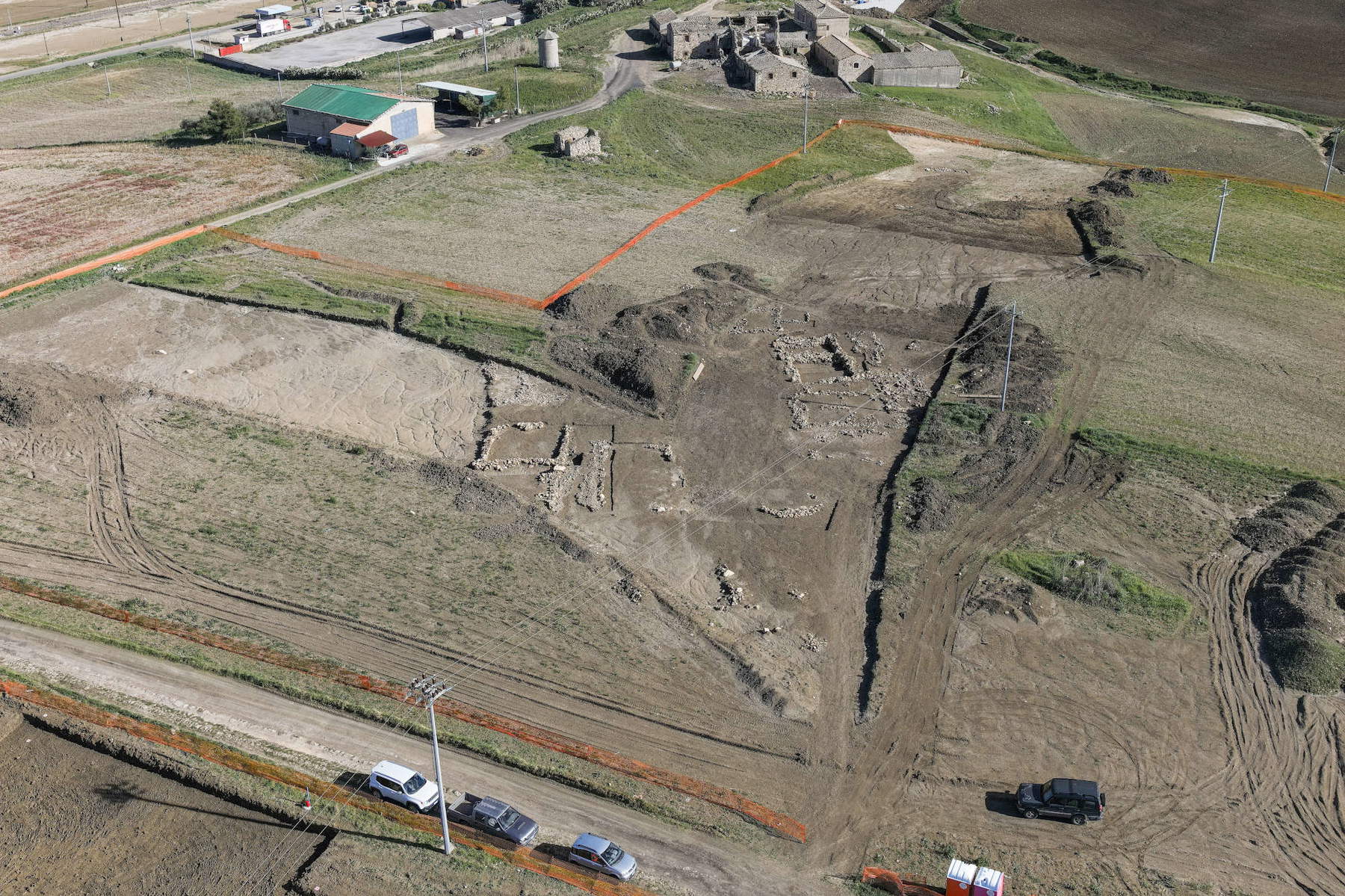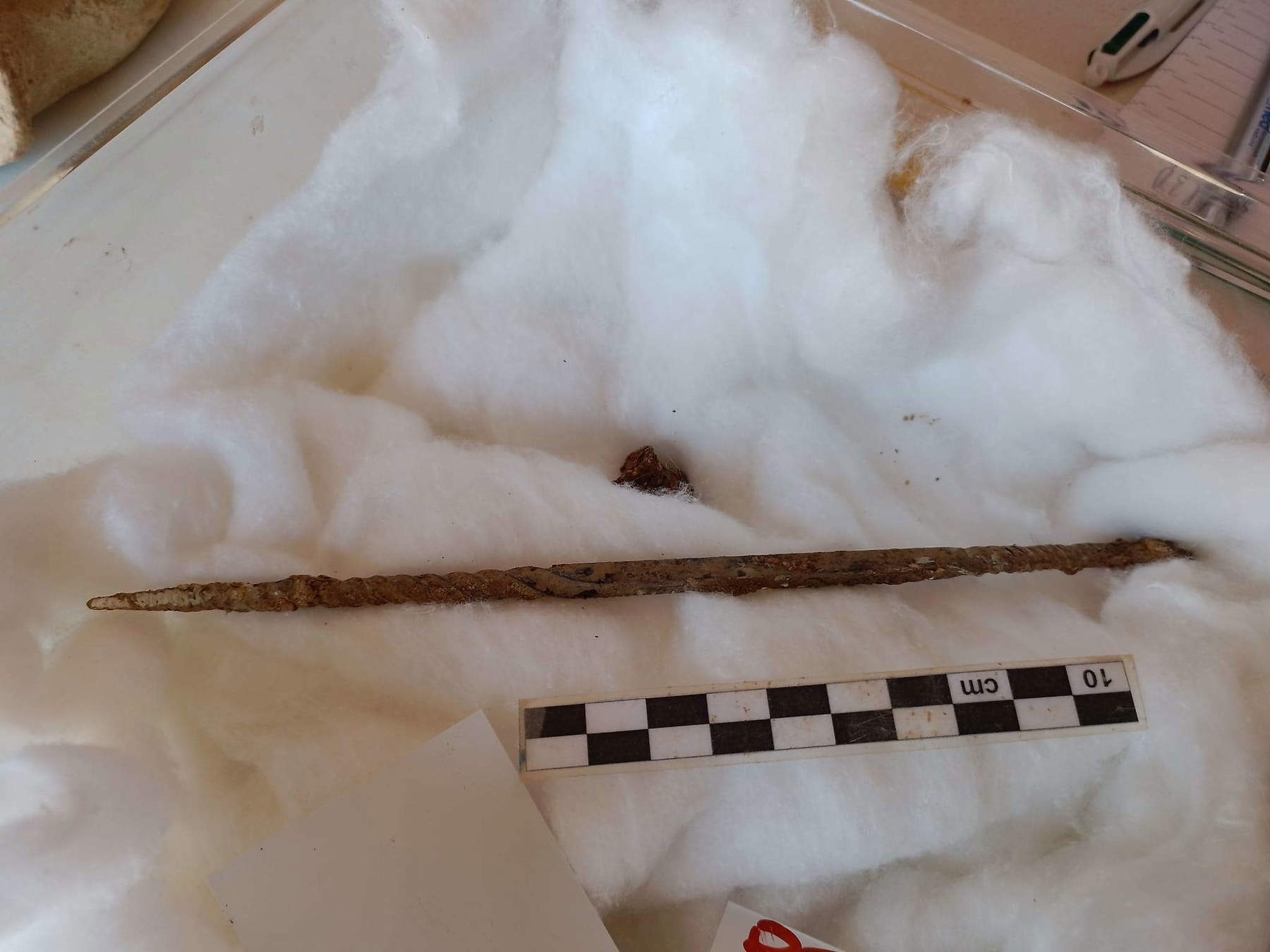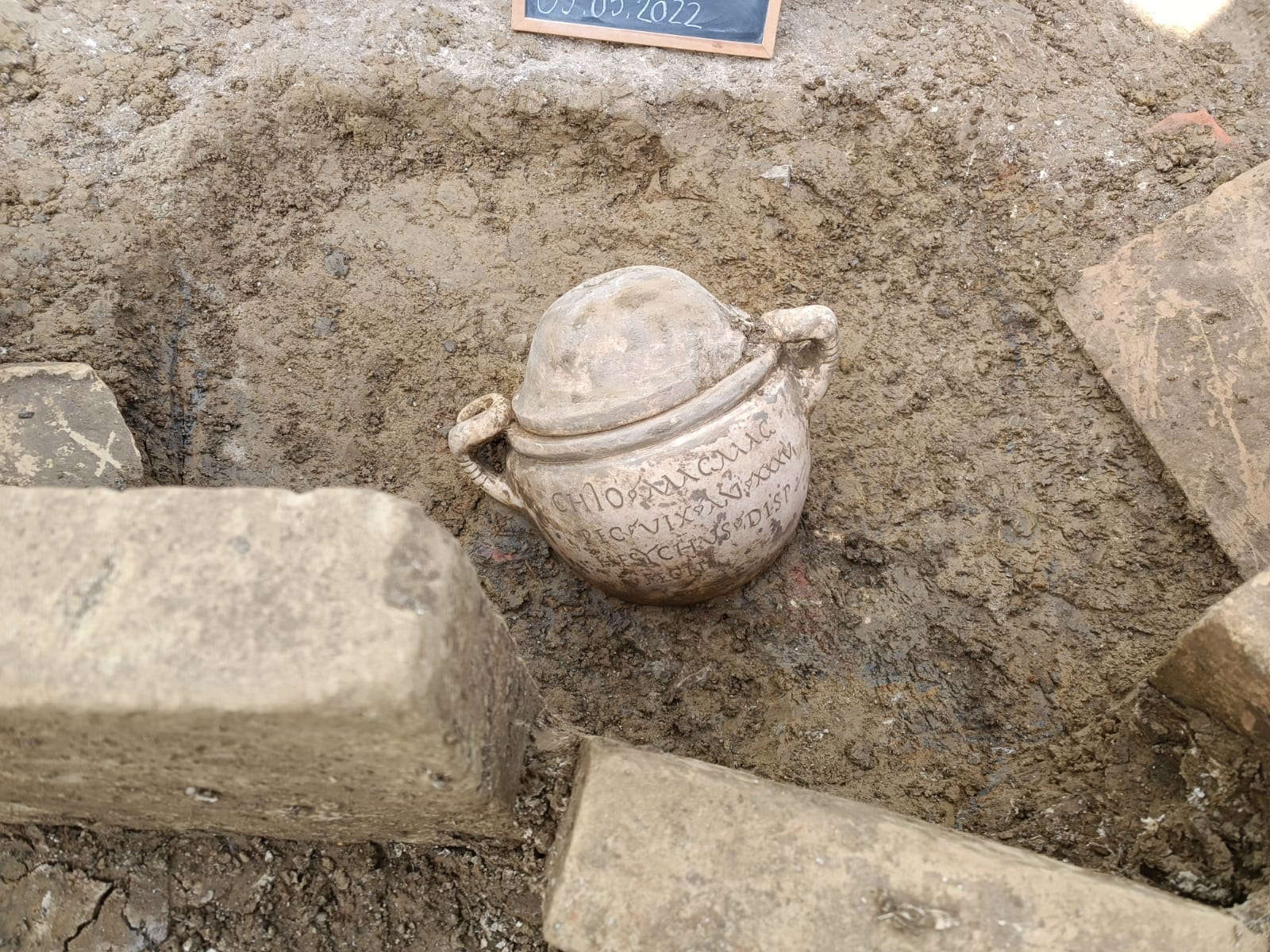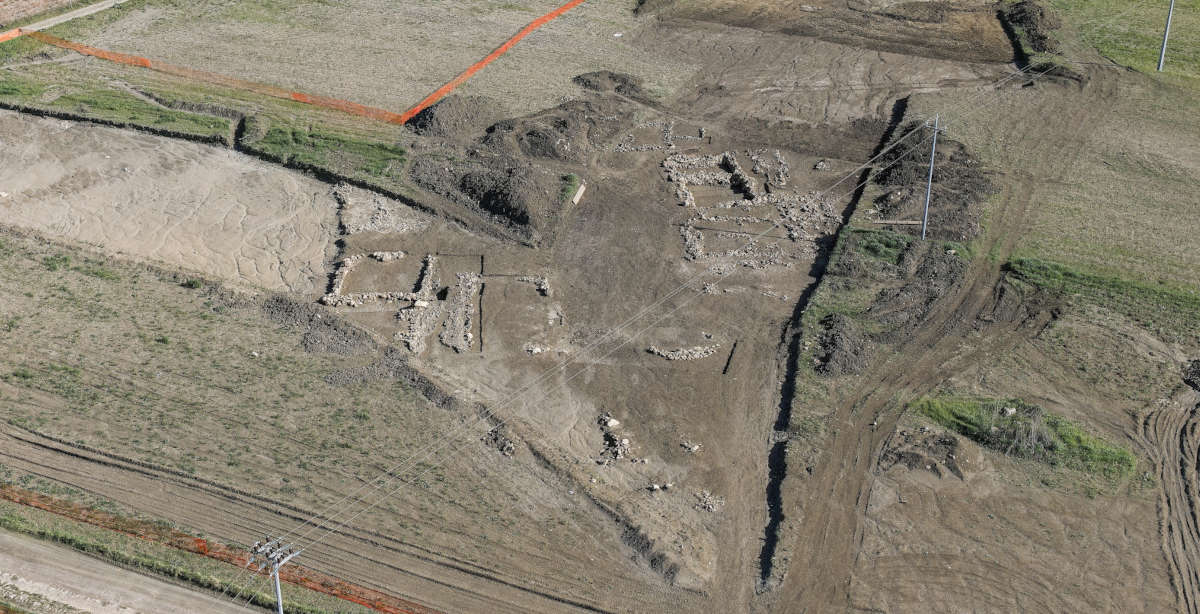A discovery of archaeological artifacts from the Imperial Roman period has occurred during work on the Palermo-Catania railway section. The discovery was made between Palomba and the locality of Catenanuova, on a hill overlooking the course of the Dittaino River (ancient Chrysas), by the State Railways Group company that is carrying out the work, Italferr. The spot enjoyed a favorable position for strategic control of the valley and communication routes, and the vast settlement can be traced between the mid-1st and 3rd centuries AD, with evidence of reoccupation in later periods as well.
To the west of the settlement, on the top of the hill and on the northwest slope, an extensive necropolis was also identified that yielded 168 burials. The data associated with it tell us of significant social stratification, with a set of tombs of the “earthen pit” type, with roofs mainly consisting of tiles and roofing tiles, and cores of monumental tombs, offering further evidence of the complexity and social diversity of the main settlement.
It should be noted that Italferr was the first Italian engineering company to equip itself, since the 1990s, with its own staff of professional archaeologists capable of handling all archaeological activities functional to the design and execution of railway works, so frequent were such contexts.
It was precisely the preventive archaeological investigations carried out by Italferr that enabled this important discovery. An important activity to acknowledge. The infrastructure work in the works is the new Palermo-Catania-Messina link, an integral part of Core Corridor No. 5 “Scandinavian - Mediterranean (Helsinki-La Valletta),” which will allow an important reduction in travel time, together with numerous advantages on general transport safety and the economic and social development of the territories involved.
Returning to the archaeological discovery, it must be said that it is a confirmation of the levels of wealth in the area with a core of monumental burials from the necropolis, consisting of a capuchin tomb, a bustum (i.e., the place where, in the necropolis, cremations took place) and an incineration in a marble urn. In particular, the bustum yielded an exceptional trousseau consisting of five necklaces and two gold rings while the cinerary urn, made of Carrara marble, bears an inscription testifying to the presence on the site of a “Magnus Magister Pecoris,” thus a figure in charge of the administration and management of flock farming, and a dispensator, an administrator, who donated the urn to the deceased. Two figures that suggest a complex administrative structure and the settledness of individuals in charge of the management of an estate and certainly of a breeding activity.
Investigations referred to the settlement, report an organization of spaces that confirms the complexity of the settlement, presumably a rustic villa with a central room and at least three ambulatories. Remnants of pavements and roof collapses confirm the special importance of the settlement, whose strategic position originally dominated the entire slope. The characteristics of the structures that have emerged suggest that they cannot be interpreted as living quarters, but rather as areas attributable to a productive activity to be connected with the pars dominica of the Roman villa.
Finally, thanks to the results of magnetometer surveys, an area of possible cult use was found in the eastern sector of the site. This is a natural channel within which various traces of burnt animal bones were found, alternating with layers of burnt and alluvial deposits, suggestive of the performance of rituals. The area has returned several specimens of osc, needles and worked bone pins. Prominent is the presence of a die with an inscribed letter not yet deciphered.
Excavation activities, which began in 2020 in collaboration with the Enna Superintendency of Cultural and Environmental Heritage, are still ongoing with the aim of documenting the archaeological area in all its extent and developing a project to enhance the site.





 |
| They do work on the Palermo-Catania railway and discover a Roman settlement |
Warning: the translation into English of the original Italian article was created using automatic tools. We undertake to review all articles, but we do not guarantee the total absence of inaccuracies in the translation due to the program. You can find the original by clicking on the ITA button. If you find any mistake,please contact us.